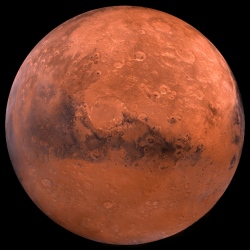
The rover chooses a target and fires laser pulses, using spectrometers record the light signatures that chemical elements produce. With Autonomous Exploration for Gathering Increased Science (AEGIS) software from the Opportunity rover’s days, Curiosity can select where to point its laser based on the size and color of a rock.
While scientists are commuting or trying to reach inbox zero, Curiosity’s hard at work. "This autonomy is particularly useful at times when getting the science team in the loop is difficult or impossible, in the middle of a long drive, perhaps, or when the schedules of Earth, Mars and spacecraft activities lead to delays in sharing information between the planets," robotics engineer Tara Estlin, the leader of AEGIS development at JPL, said in a press release.
In the same release, NASA notes that for now, human engineers are still selecting most of the ChemCam targets. ChemCam data could show how Mars’ environment went from potentially fertile to barren and unsuitable for biological life as we know it.
